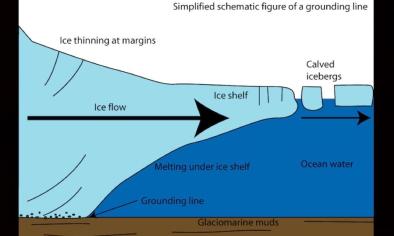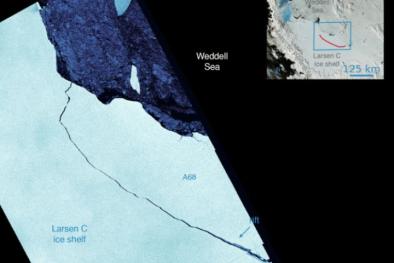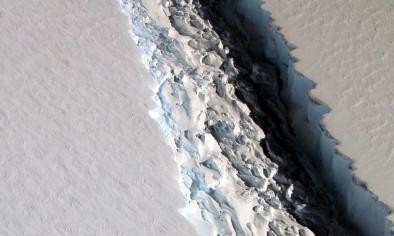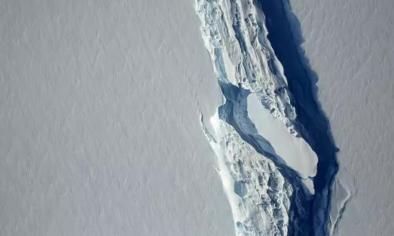Science Source
Marine ice regulates the future stability of a large Antarctic ice shelf
- States that the collapses of the Larsen A and B ice shelves on the Antarctic Peninsula in 1995 and 2002 confirm the impact of southward-propagating climate warming in this region
- States that recent mass and dynamic changes of Larsen B’s southern neighbour Larsen C, the fourth largest ice shelf in Antarctica, may herald a similar instability
- Uses a validated ice-shelf model run in diagnostic mode, constrained by satellite and in situ geophysical data
- Identifies the nature of this potential instability
- Demonstrates that the present-day spatial distribution and orientation of the principal stresses within Larsen C ice shelf are akin to those within pre-collapse Larsen B
- Finds that when Larsen B’s stabilizing frontal portion was lost in 1995, the unstable remaining shelf accelerated, crumbled and ultimately collapsed
- Hypothesizes that Larsen C ice shelf may suffer a similar fate if it were not stabilized by warm and mechanically soft marine ice, entrained within narrow suture zones
Related Content
Headline

Jul 13, 2017 | Weather Underground
Delaware-Sized Iceberg Detaches from the Larsen C Shelf
Headline

Jul 13, 2017 | Mashable
The 7 best views of the Larsen C iceberg breaking off Antarctica
Headline

Jul 12, 2017 | Mashable
One of the largest icebergs ever recorded just broke free of Antarctica
Headline

Jul 12, 2017 | USA Today
An Antarctic iceberg nearly the size of Delaware — one of the largest on record — has broken off


